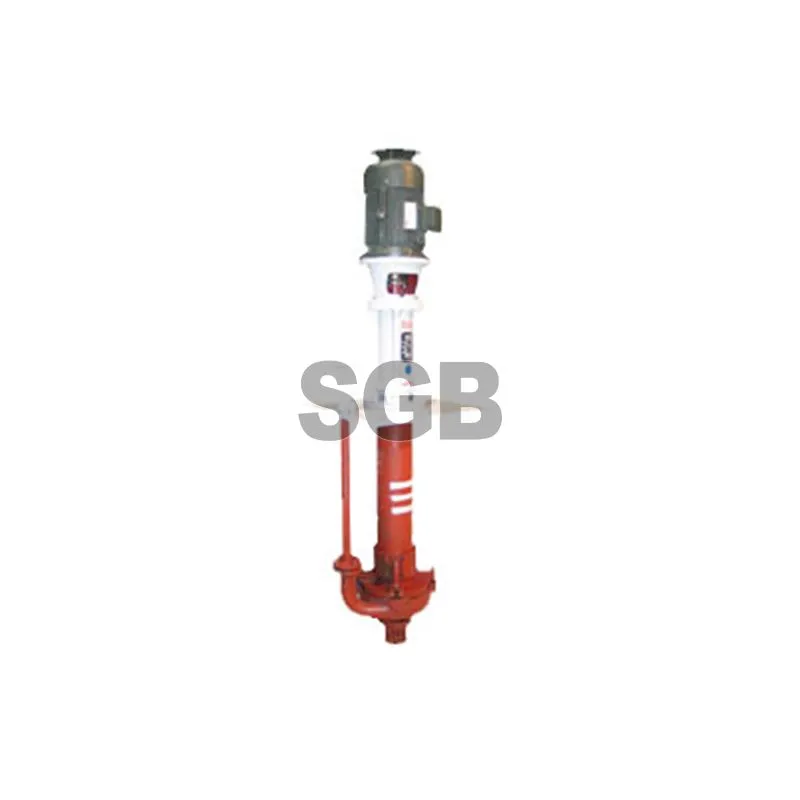Difference between Horizontal and Vertical Slurry Pump
Slurry pumps are indispensable tools in various industries, facilitating the transfer of abrasive and viscous fluids efficiently. The primary distinction between horizontal and vertical slurry pumps lies in their orientation and operational dynamics.
Orientation:
Horizontal pump as the name suggests, feature a horizontal shaft and impeller orientation. Conversely, vertical slurry pumps are characterized by a vertically oriented shaft and impeller assembly.

Design and Construction:
Horizontal slurry pumps typically boast a robust casing with a horizontal shaft and impeller configuration. In contrast, vertical slurry pumps are designed with a vertical shaft, submerged impeller, and casing, often featuring a cantilevered design.
Application Flexibility:
Horizontal slurry pumps excel in handling high-volume, low-to-medium head applications, making them ideal for duties such as mill discharge, tailings disposal, and sand and gravel handling. On the other hand, vertical slurry pumps are well-suited for pumping slurries with high concentrations of solids and abrasive particles, offering enhanced efficiency in applications like sump drainage, floor drainage, and process pumping.
Efficiency and Space Utilization:
While horizontal slurry pumps are renowned for their high efficiency and ease of maintenance, vertical slurry pumps offer significant advantages in space-constrained environments due to their compact design and vertical installation configuration.
Maintenance and Accessibility:
Horizontal slurry pumps generally provide easier access for maintenance and repairs due to their horizontal orientation, allowing for convenient disassembly and component replacement. Vertical slurry pumps, although slightly more complex to service, offer benefits in applications where space limitations or sump depth constraints are critical factors.
Cost Considerations:
Horizontal slurry pumps are often preferred for their lower initial capital costs and ease of installation. Conversely, vertical slurry pumps may entail higher upfront investments but offer long-term benefits in terms of space savings, operational efficiency, and reduced maintenance expenses.
Material Compatibility:
Both horizontal and vertical slurry pumps are available in a variety of materials, including rubber-lined, metal-lined, and specialty alloys, to suit specific application requirements and fluid characteristics.
Environmental Impact:
When evaluating the environmental impact, both types of centrifugal pumps offer advantages depending on the application context. Horizontal slurry pumps may require larger footprints but offer easier containment and spill control, while vertical slurry pumps minimize floor space requirements and reduce the risk of external contamination in certain scenarios.
Adaptability to Industry Standards:
Horizontal slurry pumps adhere to established industry standards and specifications, ensuring compatibility with existing infrastructure and operational protocols. Vertical slurry pumps, while equally compliant with industry norms, may require specialized installation considerations due to their unique configuration.
Operational Considerations:
Horizontal slurry pumps are typically favored in applications where flow rate and discharge pressure are primary concerns, offering consistent performance across a wide range of operating conditions. Vertical slurry pumps excel in scenarios where fluid depth, solids concentration, and space limitations dictate specialized pumping solutions.
Longevity and Durability:
Both horizontal and vertical slurry pumps are engineered for durability and reliability, with manufacturers incorporating advanced materials and design features to enhance wear resistance, corrosion protection, and longevity in demanding environments.
Integration with Automation:
In today's digitized landscape, integrating slurry pump systems with automation and monitoring technologies is paramount for optimizing performance, efficiency, and safety. Both horizontal and vertical slurry pumps are compatible with smart control systems, enabling real-time monitoring, predictive maintenance, and remote operation capabilities.
Future Trends and Innovations:
As industries evolve and demand greater efficiency, sustainability, and reliability, manufacturers continue to innovate in slurry pump design, materials, and operational technologies. Anticipated advancements include enhanced wear-resistant materials, energy-efficient motor technologies, and advanced predictive analytics for proactive maintenance.
Conclusion
Understanding the difference between horizontal and vertical slurry pumps is pivotal for selecting the most suitable pumping solution for diverse industrial applications. Whether optimizing for efficiency, space utilization, or long-term performance, careful consideration of operational requirements and environmental factors is essential. By leveraging the insights provided in this guide, industry professionals can make informed decisions to enhance productivity, reliability, and sustainability in slurry pumping operations.
Comments
Post a Comment